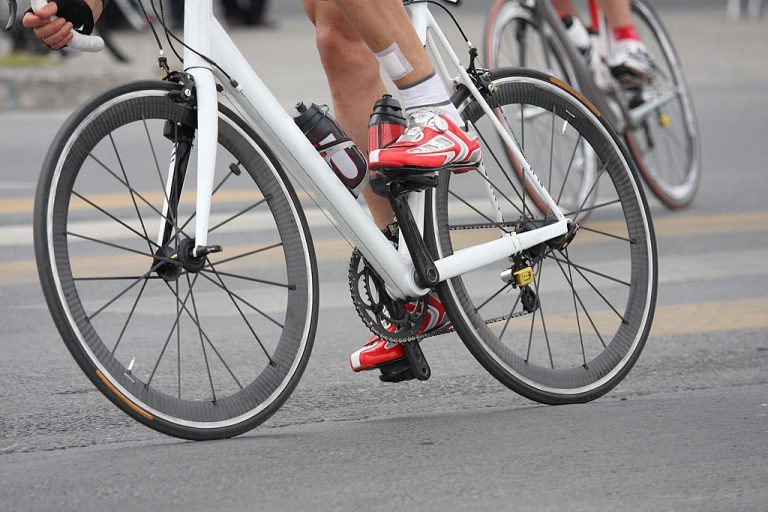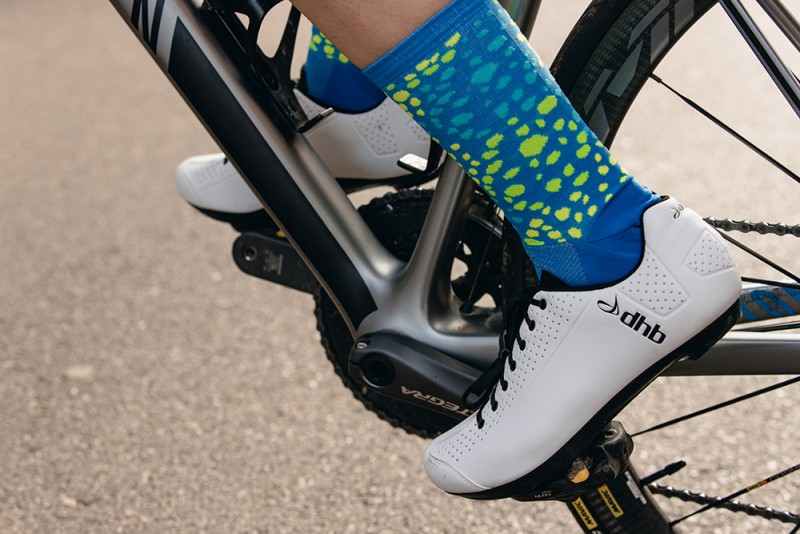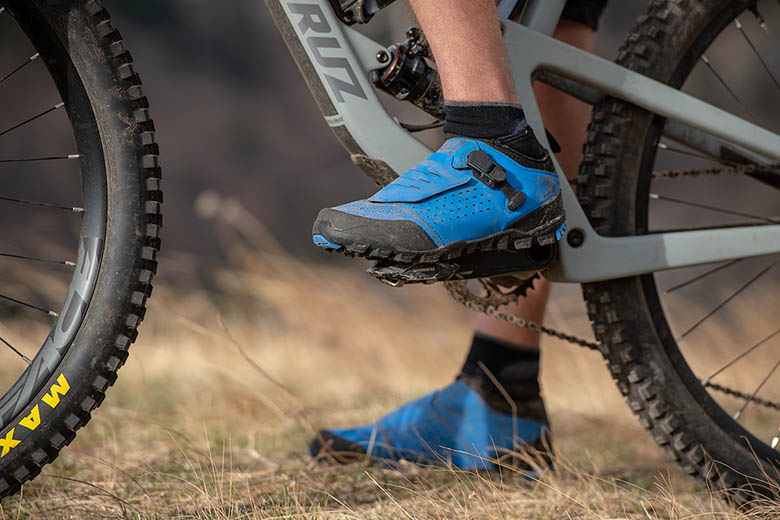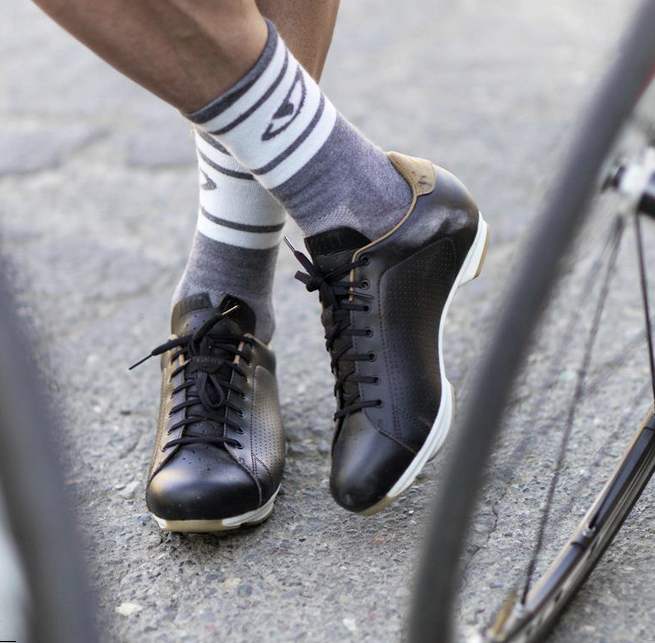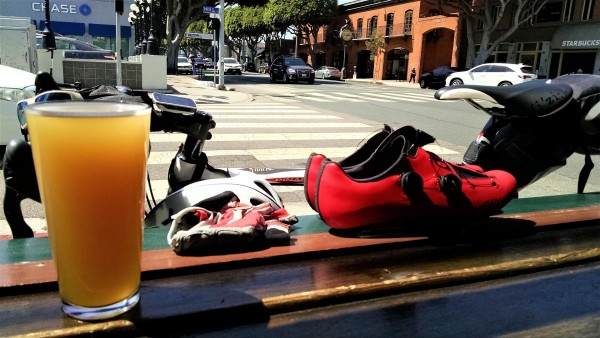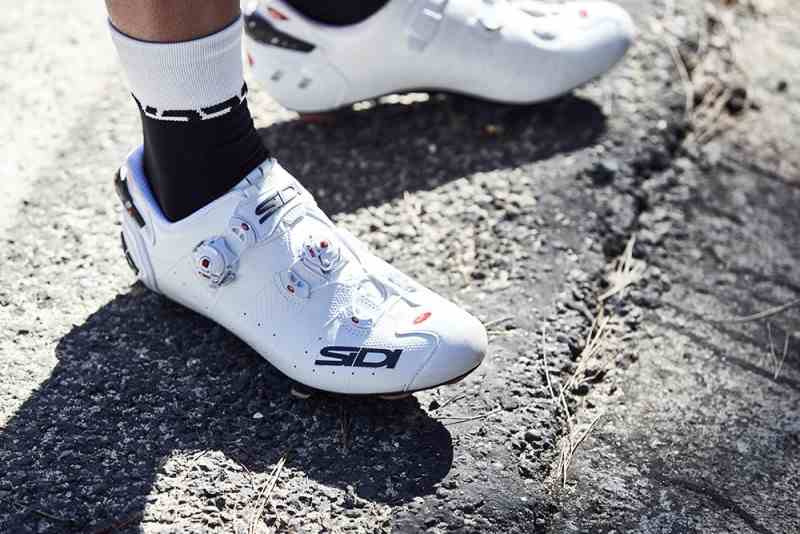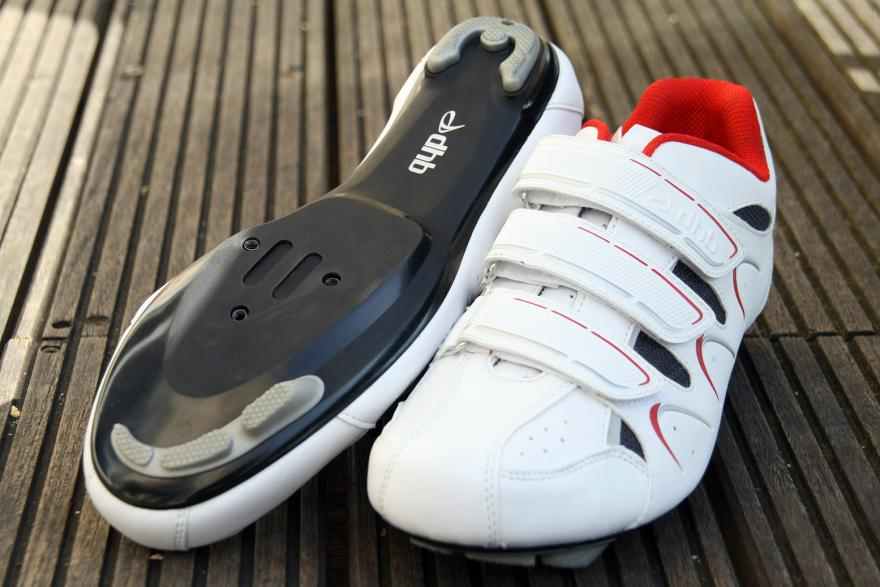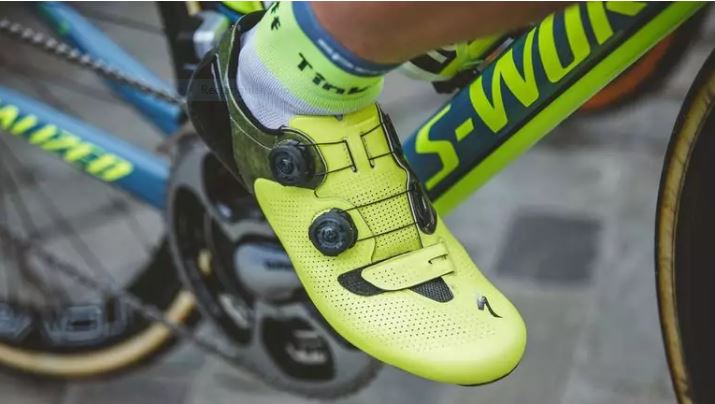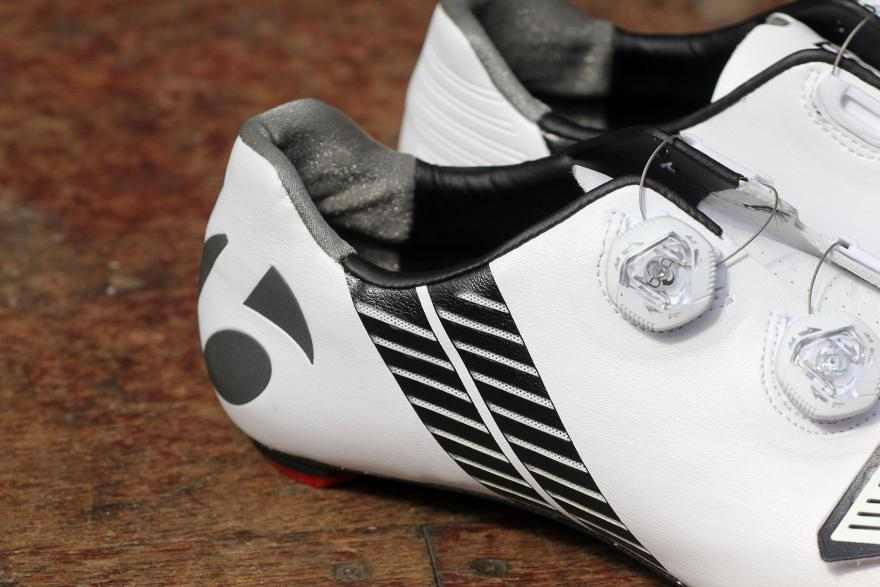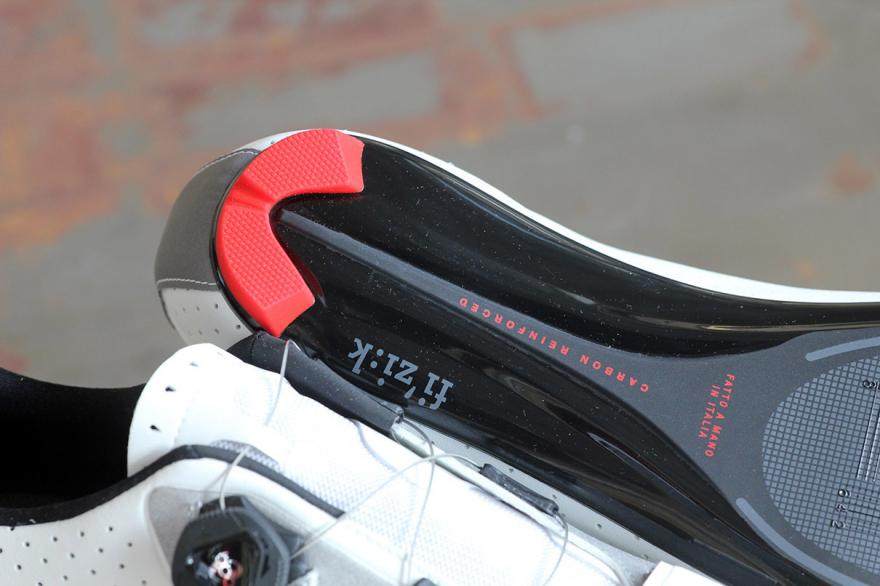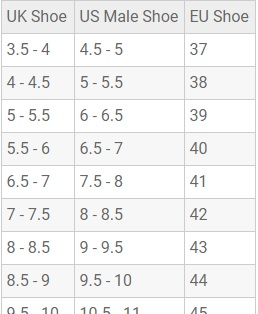As Martina Boone, succinctly puts it in her book Compulsion, “It doesn’t matter how great your shoes are if you don’t accomplish anything in them.” Some people ask, why buy a pair of shoes specifically for cycling, my good old trainers should do the job.
Well, why to wear Oxfords to the Board Meeting, your comfy sandals should do. Well, my friend, non-cycling shoes are not the name of the game here. Cycling shoes employ the ‘clip-less’ or the ‘clip-in’ technology and are fashioned with a cleat on the bottom of the shoe.
The shoe mates with the pedal and the effort of a pedal stroke are rendered fluid and effortless, and voila! Your speed and efficiency climb through the roof. In this comprehensive brief, we will explore the whys and wherefores of how to buy road bike shoes.
How to Buy Road Bike Shoes
Bike cycling shoes come in a variety of genres; shoes for road biking, triathlon biking, mountain biking, as also indoor cycling, etc. Here we will confine our discussion to road biking.
The Riding Style Determines Both the Shoe and the Pedal
Let’s home in first on what kind of riding is it that you do. If you do off-road gigs, dirt trails and such, you will need mountain bike pedals the utilize cleats bolted into the shoe by means of two holes. The pedals are designed dual-sided so you can slip in from either side. It is so much simpler to just hop on and push on in challenging terrain. Nearly all mountain bike shoes employ this layout. So before you spend money, be well steered by this buying guide.
If you commute to work, dash off on short rides to the supermart and also do a fair bit of walking about, as far as the pedals go, mountain bike type is fine. But you don’t want your cleats screeching on marble floors when you are walking. The answer here is a commuter biking shoe.
These have wide, extra walking pads and are devoid of a cleat that grounds when you are ambling about. This way you can discount close encounters with floors. If the road is your fav cruising ground, what you need is a road pedal, which amounts to a single-sided entry platform.
Of course, we have the regular platform pedals and they being pretty much commonplace, skipping them is a misdemeanor. The truth is you can wear what you feel like wearing on platform pedals except, here’s the clincher, biking shoes. It will refuse to grip. The trick here is to have maximum soft rubber contact with the pedal so your feet don’t slide and slip right off. Most bike shoes have ultra-smooth, super-tough carbon, nylon or plastic soles. And in any case, the sole idea of a bike shoe is to that the cleats give traction and bind you to the pedals to uplift control and stroke. Mountain Bike Shoes
Mountain biking shoes are markedly different from their brethren both concerning function and look. The stark, obvious difference is that mountain bike shoes have these lugs and grips on the sole. This is to enable dismounting and opening a gate or getting across some impediment on the trail or in slushy, muddy conditions. Secondly, the cleat arrangement is different and last, they are fashioned out of water-proof materials such as synthetic leather to ward off the trail gook.
Mountain bike shoe soles cram in extra flex. Ventilation is a big number, and these shoes can be boot style or for summers, with more mesh covering. They are heavier considering all the reinforcements.
Commuter Bike Shoes
Commuting bike shoes tend to be practical but flashy. They may be of the laced variety or plain simply fastened by velcro. You, of course, will be doing a little walking too, so these shoes are padded and the outsole has large walking pads. 2-hole cleats for the pedals are a feature with an entry that is double-sided. The soles are not rigid. Walking on carbon soles is not the most delightful of experiences. Commuter shoes are inexpensive but they will pamper you even if you deviate and take on a steep incline on your commute.
Touring Bike Shoes
Touring and walking go hand in hand. They are close to commuting shoes but clocking a whole lot more miles, you would prefer a little stiffness in the soles, something lighter and less cumbersome than laces. A dual-purpose shoe for walking and performance is a bit dodgy. So use your discretion. Are you going to be doing more walking, then a walking shoe it is. If you are going to be saddle bound interspersed with short halts, you are looking for shoes that offer more stiffness, less walkability, and better adjustability. Nowhere is it carved in stone that a touring shoe has to be low-cost and flexible. Carbon shoes that are high-performance are a good bet for your touring bike but they need to be broken in.
Road Bike Shoes
Now we are treading on the hallowed ground of serious shoes. Proper bike shoes are designed especially for when you are saddle bound. Once you disembark, they are a bother. Cycling shoes are role-based; they are stiff, streamlined, uncomfortable and light. The soles are mostly without rubber soles, of stiff nylon composite or carbon-fiber; the cleats sit externally. They are specifically designed keeping efficiency in focus for maximum power transmission to the pedals and forward propulsion.
What Should You Look Out for?
1. Cleats
At first glance mountain bike shoes and road bike shoes look similar but there is a fundamental difference; the cleating. A 2-bolt system is a feature of MTBs so that the rider can jump on and off without hindrance, an action that is oft-repeated. Road bikes use the 3-bolt system and as pointed out, these ensure the maximum transference of pedal power as they cover a wider area.
2. Soles
When we talk of outsoles, one overriding concern is that the stiffer the better. If a sole flexes, power is lost; hence the preference for a stiff sole. The more expensive the shoe, broadly speaking, the stiffer and light it will be. So be a little generous when investing in a pair.
- Plastic soles– Entry-level road bikes have them. They are the heaviest and the most flexible.
- Carbon Composite – A blend of plastic and carbon, the soles are a compromise between stiff and very stiff. These are a feature of mid-level shoes.
- Full carbon soles– These shoes rule. They have the stiffest soles and are lightest in weight of all road bike shoes. They cost a pretty penny too. There are two sides to carbon soles; ultimate power transference and increased sensitivity to bumps and holes that are transmitted upwards.
3. Fastening Systems
For road bike shoes, the fastening system holds a good deal of importance. You don’t want to stop, unclip to make adjustments, it needs to be done on the run. There are four means of fastening:
- Velcro– Entry-level shoes hog this slot. Sure they can be rapidly fastened and unfastened but adjusting when on the move is a tad problematic. Also, over time the velcro degrades with clogged with fluff.
- Ratchets– These are often in conjunction with velcro but are way more precise. They require the use of both hands to adjust properly which rules out any changes you require done in a snap on the move. These are a feature of mid-priced road biking shoes.
- Dials– These offer precision and can be manipulated with one hand. They are pricey but well worth the cost.
- Laces– Retro at its best. And like all things retro, they are enjoying a resurgence. They may not be the most efficient, but look cool and turn heads. Reason enough to reconsider.
4. Upper Materials
It’s not all about show or aesthetics. Uppers are directly linked to performance. Alike the soles, the stiffer they are, the more is the power transmitted to the pedals. The flip side is that they will be uncomfortable on long rides. So back to basics; decide what exactly is your riding goal and choose the shoe accordingly.
Entry-level shoes use a synthetic material which is care-friendly. Shoes that come at a premium are made of organic materials, the summit being kangaroo leather which besides being extravagantly breathable, requires a lot of care and fussing about. Again, a synthetic upper may be your best bet in frequent adverse conditions if that is what gets your mojo. It’s the best bet.
5. Ventilation and Insulation
Ventilation, though essential, is still a matter of personal preference. Shoes for summers or otherwise warm climates have a mesh covering on the uppers, holes at the bottom. But these features in cold weather can cripple you down in discomfort. Additional insulation is a feature of cold weather shoes. Wearing overshoes is further insurance.
6. Non-Slip Heel Lining
7. Heel/Toe Bumpers
These essentially are to keep the soles of your biking shoes in good nick. They are a useful addition and need replacement over time.
8. Fitting
Imagine a train of gears where one cog is worn or misaligned. It sets off a chain reaction affecting the final efficiency. Your foot, when cycling is one such cog. So your shoes need to fit smartly and snugly. No give is allowed. At first, this asks maybe a little binding. A poor fit, other than affecting performance can cause what is termed as ‘hot foot’. This is a result of friction arising from your foot rubbing against the shoe insides. A ready reckoner test is to stand on your toes and check. A gap between your heel and the shoe indicates too large. Vice versa, it is too small. Refer to the size chart shown below.
9. Insoles
Insoles are a provision to add increased comfort and support. They are treated with an anti-bacterial composition that banishes the foul odor which is an inevitable byproduct.
FAQs:
1. What shoes do pro cyclists wear?
Professional athletes wear the same types of cycling shoes as you, albeit they are more customized by specialists because of a lot of money riding on them. Their shoes don’t exactly spell magic. It’s sheer perseverance.
2. Can I use MTB shoes on a road bike?
Yes, you can. But there are downsides. As the cleat is embedded, it is easier to walk on. On hard surfaces, it is a problem. A 3-cleated recessed system works well.
3. Do you need special shoes for cycling?
Of course. Try having your soup with a fork. Jokes apart, this is serious business. If you don’t have the right gear, your performance is retarded, there is a strain on your body, all of which will manifest as an injury of some sort. So don’t even entertain the thought.
4. How long should road cycling shoes last?
This is dependent directly on usage and conditions. One cannot fix a time or mileage limit here. Your riding style, the way you pedal, personal anatomical differences, all plugin.
Whoa! We know how to choose cycling shoes. Shoes are a man or a woman’s best friend which we all are aware of. In this world of biking shoes, no quarters can be done away with. It has to be rock solid. So even if it is over budget for you, we recommend you do not scrimp. A tremendously beautiful experience awaits your discovery. Go for it.

